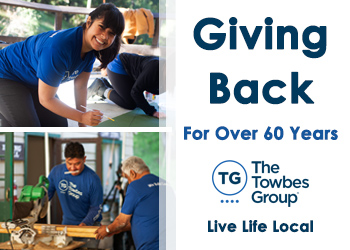In the biggest single round of venture capital financing announced this year in the Tri-Counties, Carpinteria-based medical device maker ValenTx raised $22 million Sept. 8.
Founded in 2002 and operating quietly until now, the company is testing out a treatment for morbid obesity, a condition in which patients are typically overweight by more than 100 pounds. ValenTx’s treatment and device would compete with gastric bypass surgery and two competitors’ gastric bands, rings that go around the stomach to help patients feel full after eating less.
James Wright, ValenTx’s president, said the funding will go toward expanding the start-up’s staff and “expanded clinical studies both outside and inside the United States, getting us in the queue for outside-the-U.S. approval and FDA approval.”
Right now, patients have three main options for surgery to address morbid obesity. The first is gastric bypass surgery, where part of the stomach is closed off with staples and the entire digestive tract is re-routed. It can cause complications with nutrient absorption.
The second option is one of two competing bands that go around the stomach to help the patient feel full after eating less. Allergan’s Lap-Band was developed in Carpinteria as part of an Inamed subsidiary before Allergan bought Inamed for $3.2 billion in 2006.
The Lap-Band has been on the market since 2001. Johnson & Johnson received FDA approval for a competing band in 2007.
Gastric bands are safer and less invasive than gastric bypass surgery but also less effective, Wright said. ValenTx’s goal is a device and procedure that has a safety an invasiveness profile similar to current bands but effectiveness that rivals bypass surgery. He even hopes to eventually develop an orally administered device that wouldn’t require surgery at all.
“The problem with bypass surgery right now is that you’re doing a major surgery. You’re kind of rerouting the digestive system,” Wright said. “With our therapy, you won’t be doing any of that. You’ll be implanting a device that will have the same effect as a bypass. It will be reversible.”
Wright cites a Centers for Disease Control study that says obesity drives 9 percent of all health-care spending. Even though ValenTx’s treatment would target only the most serious cases, Wright said, there’s plenty of market left to address.
“This is a very interesting space in the medical device area because there are so many patients. They estimate 15 million patients in this morbidly obese category, and only 200,000 or so are getting surgery a year,” Wright said. “The penetration in this space is quite small. There’s a lot of room for new innovative therapies to come along.”
The sales figures at Allergan show there’s a viable revenue stream. The company’s obesity interventions, which include the Lap-Band developed at Inamed, brought in $296 million in 2008, up from about $270 million the year before. Johnson & Johnson doesn’t break out its gastric band sales.
Wright wasn’t forthcoming with details of how ValenTx’s treatment works, but the company’s U.S. patent on its device and surgery – number 7220284, published in 2007 – provides some insight.
The invention consists of three major components: A stoma, or opening in the stomach, to help control how much food goes in and out, and then two sleeves, one funnel-shaped sleeve for inside the stomach and one for inside the small intestine. The sleeves can be made of a semi-permeable material that would let in digestive fluids but keep solid food from being absorbed.
Wright also declined to discuss the stage of the company’s studies or how far from market it might be.
“We’ve started our clinical experience, and things look positive,” Wright said. “We’re happy with what we’ve seen so far.”
Wright also did not want to disclose how much capital ValenTx has raised so far. But filings with the California Department of Corporations suggest it had raised about $6 million in equity funding and about $2 million in 8 percent convertible notes before its most recent round of capital.
Nationally, the medical device market has proved one of the few bright spots in venture capital investing, growing from $452 million in the first quarter to $628 million in the second quarter, according to data gathered by PricewaterhouseCoopers and the National Venture Capital Association.
“The medical device sector has hung in there,” said Randy Churchill, director of emergy company services for PricewaterhouseCoopers.
Big medical device investors spearheaded ValenTx’s recent $22 million round. SV Life Sciences led, joined by Covidien Ventures and ValentTx’s existing venture capital investors: Sapient Capital, EDF Ventures, Kaiser Permanente Ventures, Affinity Capital Partners and TGap Ventures. Paul LaViolette, venture partner at SV Life Sciences and formerly chief operation officer at Boston Scientific Corp., is joining ValenTx’s board as part of the deal.
As ValenTx builds its staff, it will have a lot of expertise to draw on. Bioenterics Corp., the Inamed subsidiary that developed the Lap-Bad, was based in Carpinteria, and Allergan kept many of its research positions in the Santa Barbara area after it bought Inamed.
“There continues to be a good level of expertise about medical device development in this region,” Wright said. “There’s kind of a snowball effect where a few companies come in, then people move on to start-ups and then those continue to grow. It becomes a little community, and there’s definitely a strong one here.”






 Print
Print Email
Email














